Listen, I remember the first time I tried bavette steak at a local bistro and thought, "Why isn't everyone cooking this at home?" This bavette steak is honestly one of the most underrated cuts you'll ever throw on your pan or grill. It's got incredible beefy flavor, costs less than premium cuts, and when you know the simple tricks, it comes out tender and juicy every single time. If you've been sticking to the same old ribeye or sirloin routine, this bavette steak recipe is about to shake things up in the best way possible.
What makes this bavette steak so special is how it rewards you with steakhouse results without the fancy techniques or equipment. The natural grain of bavette steak means it soaks up marinades beautifully, and with just a hot pan and a few minutes of your time, you're looking at a dinner that'll have everyone asking for seconds. Trust me, once you nail this bavette steak recipe, you'll wonder why you waited so long to try it.
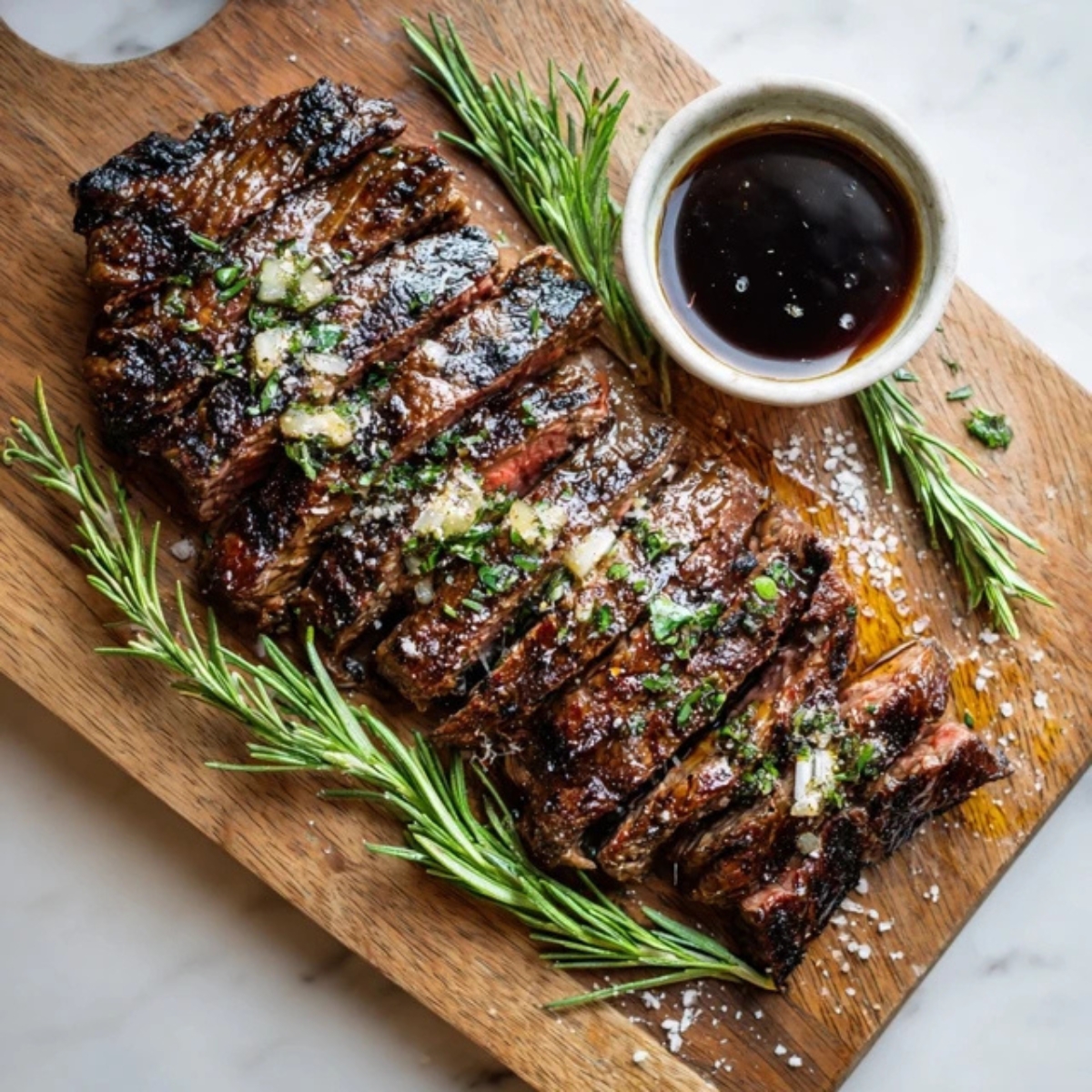
Background & Why This Bavette Steak Recipe Stands Out
Bavette steak comes from the bottom sirloin area and has been a secret weapon in French bistros for decades. The French have always known what's up with this cut; they call it "bavette d'aloyau" and treat it with the respect it deserves. What sets bavette steak apart is its loose texture and pronounced grain, which means when you slice it right (against the grain, always), you get these tender, flavorful ribbons of beef that practically melt in your mouth. It's similar to flank or skirt steak but often more tender and with a richer, beefier taste that makes it perfect for everything from tacos to fancy date-night dinners.
This particular bavette steak recipe focuses on simplicity and technique over complicated ingredients. We're talking about a straightforward marinade that enhances rather than masks the natural flavor, proper searing technique to get that gorgeous crust, and most importantly, the right resting and slicing method that transforms this affordable cut into something extraordinary. Whether you're grilling outdoors or using a cast iron skillet indoors, this bavette steak adapts beautifully to your cooking style and always delivers that satisfying, restaurant-quality bite.
Jump to:
Ingredients
For the Bavette Steak
- Bavette steak (also called flap steak)
- Olive oil
- Garlic, minced
- Balsamic vinegar
- Soy sauce
- Dijon mustard
- Fresh black pepper
- Sea salt
- Smoked paprika
- Fresh rosemary or thyme (optional)
For Finishing
- Butter
- Extra sea salt and cracked pepper to taste
- Fresh herbs for garnish
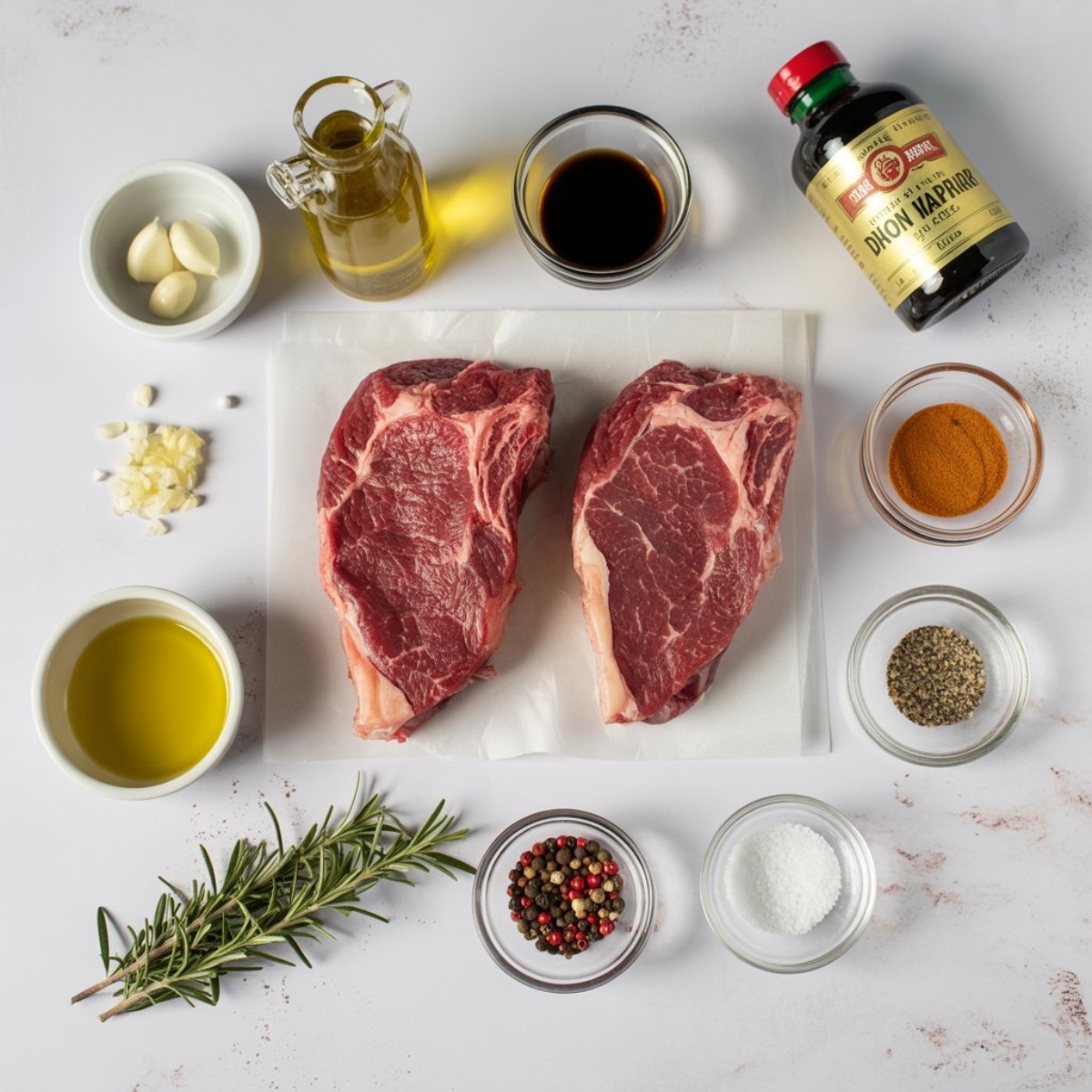
See recipe card for quantities.
Instructions
Step 1: Marinating Your Bavette Steak
- Take your bavette steak out of the packaging and pat it completely dry with paper towels; this helps the marinade stick better.
- In a bowl, whisk together olive oil, minced garlic, balsamic vinegar, soy sauce, Dijon mustard, black pepper, and smoked paprika until well combined.
- Place the bavette steak in a shallow dish or resealable bag and pour the marinade over it, making sure every surface is coated.
- Massage the marinade into the meat gently, then refrigerate for at least 30 minutes or up to 4 hours; don't go longer or the acid will start breaking down the texture too much.
- Remove the steak from the fridge 20 minutes before cooking to bring it to room temperature for even cooking.
Step 2: Preparing for the Perfect Sear
- Heat your cast iron skillet or grill to high heat; you want it smoking hot, around 450-500°F.
- Remove the bavette steak from the marinade and pat off excess liquid with paper towels; too much moisture prevents a good crust.
- Season both sides generously with sea salt; the salt creates that delicious crust we're after.
- If using a cast iron pan, add a thin layer of high-smoke-point oil like avocado or vegetable oil.
Step 3: Searing and Cooking
- Place the bavette steak in the hot pan or on the grill and resist the urge to move it; let it sear undisturbed for 4-5 minutes.
- Flip the steak only once; you should see a beautiful brown crust on the first side before turning.
- Cook the second side for another 3-4 minutes for medium-rare (internal temp should read 130-135°F).
- In the last minute of cooking, add butter and fresh herbs to the pan, tilting it to baste the steak with the melted butter.
- Use a meat thermometer to check doneness; bavette steak is best served medium-rare to medium.
Step 4: Resting and Slicing
- Transfer the cooked bavette steak to a cutting board and tent it loosely with foil.
- Let it rest for 8-10 minutes; this allows the juices to redistribute throughout the meat.
- Look closely at your steak to identify the grain direction; you'll see long muscle fibers running in one direction.
- Slice against the grain at a 45-degree angle into thin strips, about ¼ inch thick.
- Arrange the slices on a serving platter and drizzle any accumulated juices over the top.
Expert Cooking Tips
Getting your bavette steak perfect every time comes down to a few key techniques that make all the difference. Here's what you need to know:
- Temperature Control is Everything Don't skip bringing your bavette steak to room temperature before cooking. A cold steak hitting a hot pan cooks unevenly, leaving you with a gray band of overcooked meat around a cooler center. Twenty minutes on the counter is all you need. Also, invest in a reliable instant-read thermometer; guessing doneness is a gamble you don't need to take.
- The Grain Changes Everything The single biggest mistake people make with bavette steak is slicing with the grain instead of against it. Those long muscle fibers need to be cut short, or you'll end up with chewy, stringy meat no matter how perfectly you cooked it. Take a second to look at your steak after it rests and identify which way those fibers run.
- Don't Overcrowd Your Pan If you're cooking multiple steaks, give them space. Crowding drops the pan temperature and causes steaming instead of searing. Cook in batches if needed, or fire up multiple burners.
- Resting Time is Cooking Time Think of resting as the final stage of cooking, not an optional step. Those juices need time to settle back into the muscle fibers. Cut too early and you'll have a puddle of juice on your cutting board instead of in your meat.
- Marinade Balance The balsamic and soy sauce in this marinade provide both acid and salt, which tenderize and flavor the meat. But timing matters; too long and the acid makes the exterior mushy. Stick to the 30-minute to 4-hour window for best results.
Recipe Variations & Substitutions
- Different Flavor Profiles Swap the balsamic marinade for a chimichurri-style mix with fresh parsley, cilantro, red wine vinegar, and red pepper flakes for a bright, herby version. Or go Asian-inspired with ginger, sesame oil, rice vinegar, and a touch of honey. The bavette steak takes on flavors beautifully, so don't be afraid to experiment.
- Alternative Cooking Methods While cast iron and grilling are classic, you can also cook bavette steak sous vide at 129°F for 2 hours, then quickly sear it for a crust. The reverse sear method works great too; start in a low oven at 275°F until it hits 120°F internally, then blast it in a screaming hot pan for 90 seconds per side.
- Dietary Substitutions For a lower-sodium version, replace the soy sauce with coconut aminos and reduce added salt. Skip the butter finish and use extra olive oil for a dairy-free option. The bavette steak itself is naturally gluten-free and works perfectly for keto or paleo diets.
- Cut Alternatives If you can't find bavette steak, flank steak or skirt steak work similarly and use the same cooking method. Hanger steak is another excellent substitute with comparable flavor. All these cuts benefit from quick, high-heat cooking and slicing against the grain.
- Sauce Pairings Serve your bavette steak with garlic butter, red wine reduction, peppercorn sauce, or classic béarnaise. For something lighter, try a tomato-based salsa or a tangy yogurt sauce with herbs.
Equipment Recommendations
- Cast Iron Skillet (10-12 inch): This is your best friend for perfect bavette steak; it holds heat like nothing else and creates an incredible crust.
- Instant-Read Thermometer: Takes the guesswork out of doneness; look for one that reads in under 3 seconds.
- Tongs: Long-handled tongs give you control without getting too close to the heat.
- Sharp Chef's Knife: Essential for slicing against the grain; a dull knife tears the meat instead of cutting cleanly.
- Meat Mallet (optional): If your bavette steak has uneven thickness, gently pound it for even cooking.
- Grill (as alternative): A gas or charcoal grill works beautifully; aim for direct high heat.
Storage & Meal Prep Tips
- Refrigerator Storage Cooked bavette steak keeps beautifully for 3-4 days in the fridge. Let it cool completely, then store in an airtight container. For best results, don't slice it until you're ready to reheat and serve; whole pieces retain moisture better.
- Freezing Guidelines Raw marinated bavette steak freezes excellently for up to 3 months. Place it in the marinade inside a freezer bag, press out air, and freeze flat. Thaw overnight in the fridge before cooking. Cooked steak can be frozen for 2-3 months; wrap tightly in plastic wrap, then foil.
- Reheating Methods Avoid the microwave, which turns bavette steak rubbery. Instead, bring sliced steak to room temperature, then warm gently in a covered skillet with a splash of beef broth over low heat for 2-3 minutes. For whole pieces, reheat in a 250°F oven until just warmed through.
- Meal Prep Applications This bavette steak is fantastic for meal prep. Cook a large batch on Sunday, then slice and portion it into containers with different sides throughout the week. Use it cold in salads, warm in grain bowls, or quickly seared for steak sandwiches. The flavors actually develop and improve after a day in the fridge.
- Marinade Make-Ahead Mix your marinade up to 3 days in advance and store it in the fridge. This actually helps the flavors meld together. You can even freeze the marinade in ice cube trays for quick future use.
Grandma's Secret That Changed Everything
You know what my grandmother taught me that transformed my bavette steak game completely? She'd always add a tablespoon of cold butter to the pan right at the end and baste the steak continuously for the last 30 seconds. That butter mixed with the pan drippings creates this incredible sauce that coats every bite with richness. But here's the real secret; she'd toss in a smashed garlic clove and a sprig of rosemary into that butter, letting them sizzle and infuse while basting. The aromatics don't overpower the bavette steak but add this subtle depth that makes people wonder what your secret ingredient is.
The other trick she swore by was letting the bavette steak rest on a wire rack instead of flat on a cutting board. This keeps air circulating all around the meat, preventing the bottom from steaming and losing that perfect crust you worked so hard to create. It's such a simple change, but it keeps every surface of your bavette steak crispy and delicious instead of having that soggy underside nobody talks about.
FAQ
Is bavette a good cut of steak?
Absolutely! Bavette steak is an excellent cut that delivers rich, beefy flavor and tenderness when cooked properly. It's more affordable than premium cuts but offers similar quality when you slice it correctly against the grain. Many chefs prefer bavette steak for its intense flavor profile and versatility in different recipes.
What is bavette steak called in the USA?
In the USA, bavette steak is commonly called flap steak or sirloin flap. You might also see it labeled as flap meat at some butcher shops. It comes from the bottom sirloin and shouldn't be confused with flank steak, though they're often used interchangeably in bavette steak recipes.
Are flank and bavette the same?
No, flank and bavette steak are different cuts, though they're similar. Bavette comes from the bottom sirloin while flank comes from the abdominal area. Bavette steak tends to be slightly more tender and has a looser grain structure. Both cuts benefit from quick cooking and slicing against the grain, making them somewhat interchangeable in recipes.
Is bavette steak chewy?
Bavette steak can be chewy if overcooked or sliced incorrectly, but it shouldn't be when prepared properly. The key to tender bavette steak is cooking it to medium-rare or medium and always slicing thin against the grain. The loose grain structure of bavette steak actually makes it more tender than many similar cuts when handled correctly.
Time to Fire Up That Pan
We've covered everything you need to master bavette steak at home, from the perfect marinade to that crucial slicing technique that makes or breaks this dish. This bavette steak recipe isn't about complicated techniques or expensive ingredients; it's about understanding the cut and treating it right. Once you've experienced how much flavor and tenderness you can get from this affordable steak, you'll be adding it to your regular rotation alongside those weekend favorites.
Now that you've got your bavette steak skills down, why not explore other delicious beef dishes? Try our Philly Cheesesteak Bowl Recipe for a fun, deconstructed take on a classic, or dive into our Steak Pasta Recipe that combines tender beef with creamy sauce and perfectly cooked noodles. Both recipes take that same approach we used here; simple techniques, quality ingredients, and results that taste like you spent hours in the kitchen. Get cooking, and don't forget to slice that bavette steak against the grain!
With love from my kitchen to yours,
Kaitlyn Reed
Related
Looking for other recipes like this? Try these:
Pairing
These are my favorite dishes to serve with this bavette steak recipe:

Bavette Steak Recipe
Equipment
- Cast-iron skillet For perfect crust and even heat
- Instant-read Thermometer Ensures perfect doneness
- Sharp Chef’s Knife Essential for slicing against the grain
- Mixing bowl For the marinade
- Tongs To flip steak easily
- Cutting board For resting and slicing
- Wire rack (optional) Keeps crust crispy while resting
Ingredients
- 1.5–2 pounds bavette steak (flap steak) Pat dry before marinating
- 3 tablespoons olive oil For marinade
- 4 cloves garlic Minced
- 2 tablespoons balsamic vinegar Adds tang and depth
- 1 tablespoon soy sauce For umami flavor
- 1 teaspoon Dijon mustard Helps tenderize and flavor
- 1 teaspoon black pepper Freshly cracked
- 1 teaspoon sea salt To taste
- 1 teaspoon smoked paprika Adds subtle smokiness
- 1 sprig rosemary or thyme Optional for aroma
- 2 tablespoons butter For basting
- Fresh herbs For garnish
Instructions
- Whisk together olive oil, garlic, balsamic vinegar, soy sauce, Dijon mustard, pepper, and smoked paprika to create the marinade.
- Coat the bavette steak evenly in the marinade, cover, and refrigerate for 30 minutes to 4 hours.
- Preheat a cast iron skillet or grill to high heat (450–500°F).
- Pat the steak dry and season with salt.
- Sear the steak for 4–5 minutes on the first side, then flip and cook 3–4 minutes more.
- Add butter and herbs; baste the steak for the final minute.
- Transfer to a cutting board and rest for 8–10 minutes under foil.
- Slice thinly against the grain at a 45° angle.
- Garnish with herbs and serve immediately.

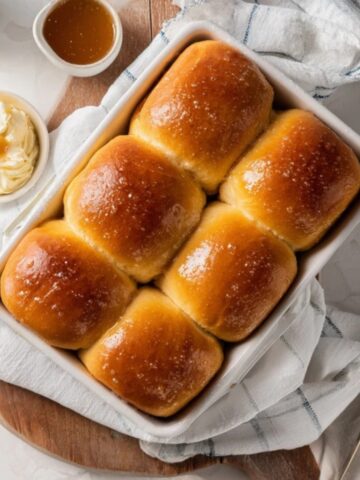
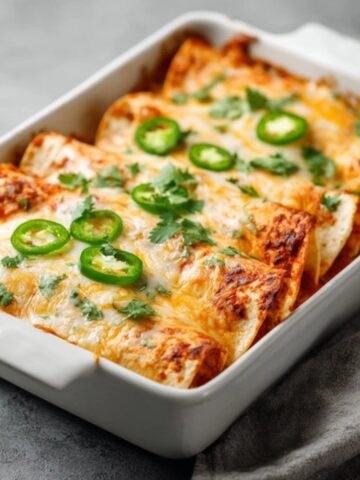
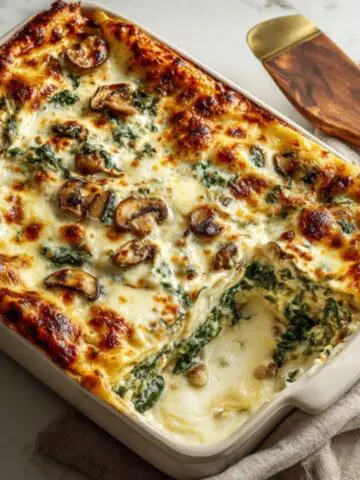
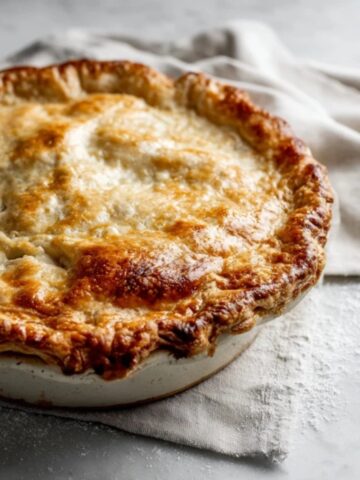
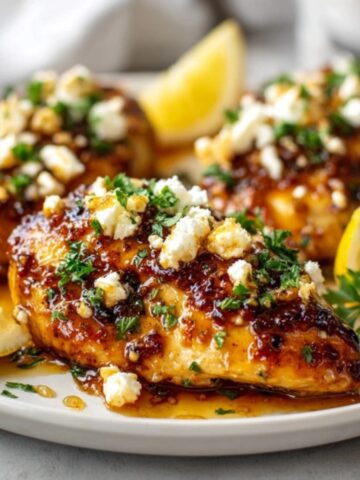

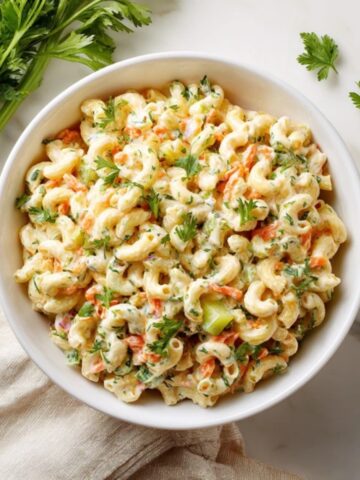
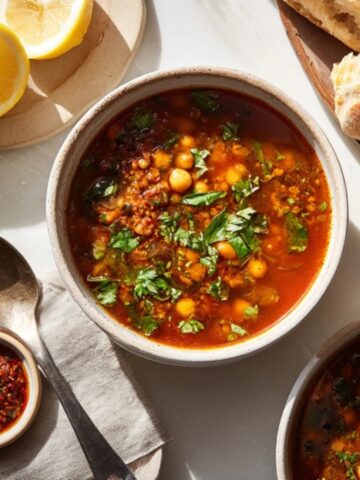


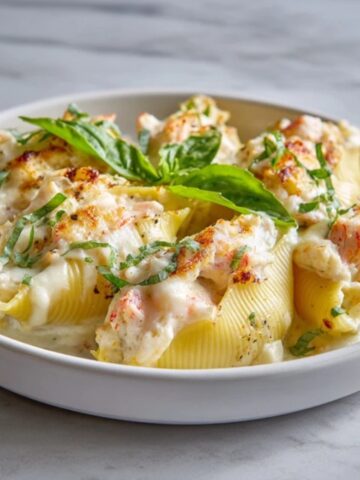
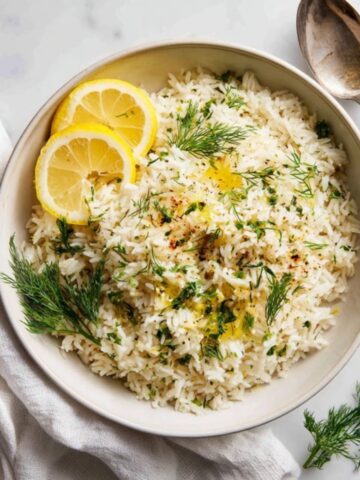
Leave a Reply